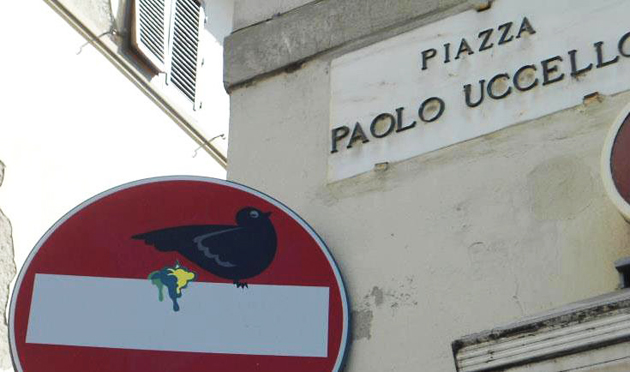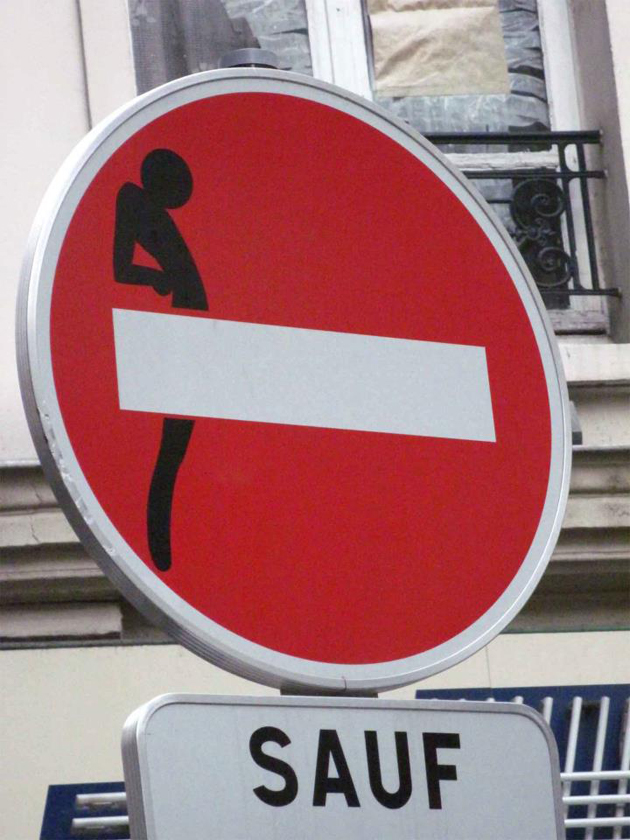Clet – The Man on the Streets
Have you seen them? Road signs modified with stickers. They’re works by Clet Abraham – an artist from Brittany, based in Florence – who has for few years been globetrotting the Italian and European cities with an unusual mission: attaching removable stickers to road signs, to modify their meaning without making them unrecognizable to drivers. From Bologna to Paris, passing through Valencia: Abraham’s nightly guerrilla changed “no entry” signs into pillories that imprison a man’s head and hands, the T indicating a “no through road” into a cross for Jesus Christ, the triangle that gives warning for the presence of an asymmetric bottleneck and the arrow indicating a one way direction, together, into two lovers and a pierced heart.
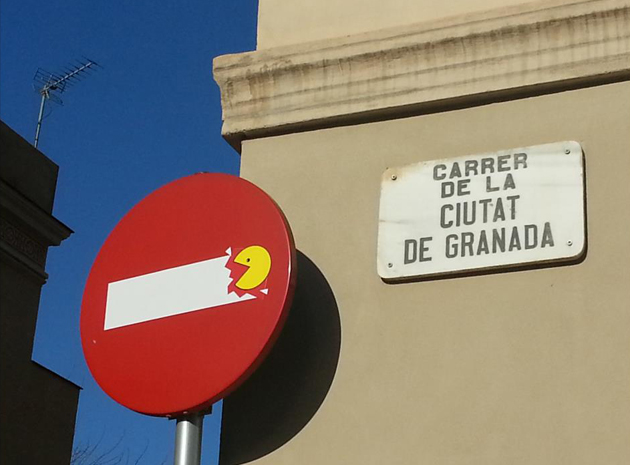
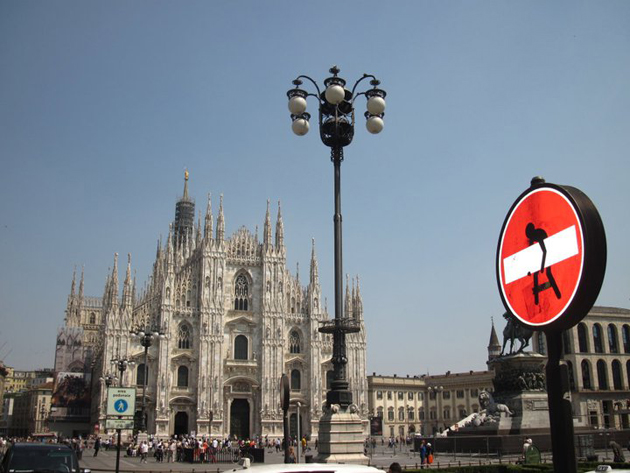
The 46-year-old artist declared that his art, rather than an hymn to anarchy, is a motivation for reflecting on the chains that tie modern society and its citizens, forced to do things because of the invisible road signs that give the obliged directions to everything. Judging by the presence of religious references, especially Christ and angels, Abraham seems also to attempt a critique to the religions, and gives life to a personal warning oriented towards local administrations, that often waste public space for useless buildings and architectural projects. You see, the ingredients for visibility are served: a smart, easy-to-use creativity spiced with messages of social, political and religious denunciation.
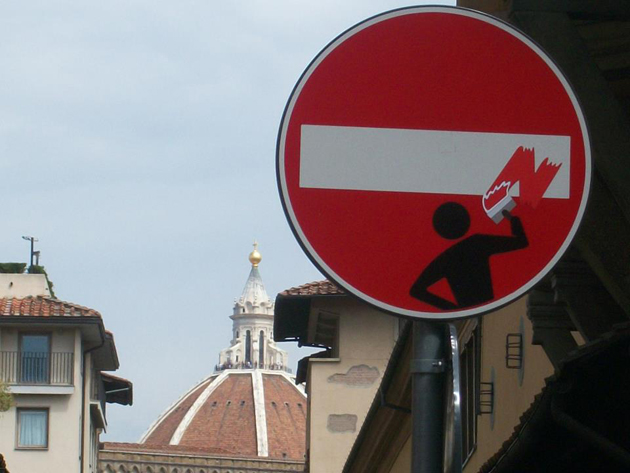
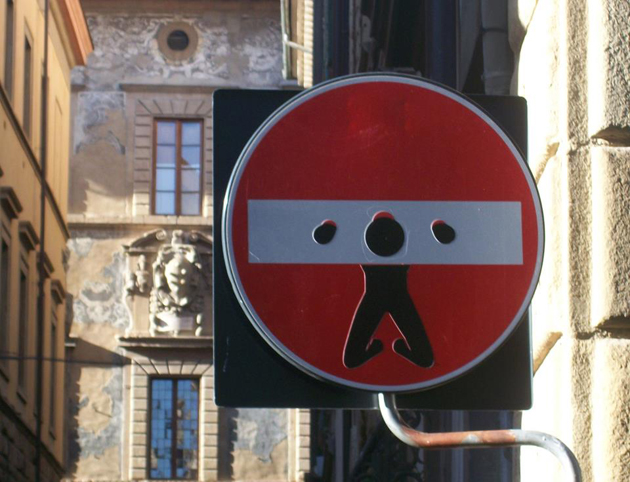
Abraham is, for definition, a street artist, but he considers his art less damaging and invasive than the graffitis, as an art form. Thinking about it, he is not much different from the Writers, especially from the most exhibitionist ones. He issues interviews, makes photos of his works and posts them on his Facebook fan page, followed by more than 25K fans. In 2010, he placed a self-portrait in the Loeser collection of Palazzo Vecchio, in Florence, in place of a Bronzino painting that was previously moved. Just few years earlier, in 2003, an unknown english graffiti artist entered into the Tate Gallery in London and casually hung his painting as if nothing had happened. You can bet that beyond all his good causes, when he carried out this little act, Abraham desired for himself even just a little piece of the fame that the graffiti artist had gained with his deed. His name was Bansky.
